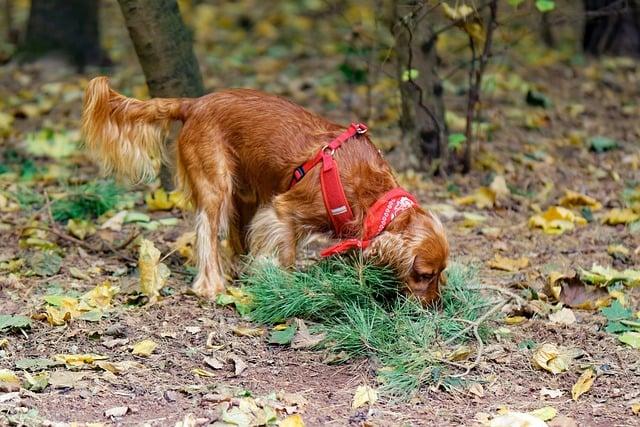Once, a dog named Max chewed up his owner’s favorite shoes. Frustrated, the owner shouted and locked him outside, thinking it was punishment. But Max only felt confused and scared. Instead, the owner learned that the best way to address bad behavior is through positive reinforcement. By redirecting Max’s energy to toys and rewarding good behavior, he transformed into a well-behaved companion. Remember, understanding and guidance, not punishment, foster a trusting bond and encourage your dog to learn and grow.
Contents
- Understanding the Psychology of Canine Behavior Modification
- Effective Techniques for Positive Reinforcement in Training
- The Importance of Consistency and Timing in Discipline
- Alternatives to Punishment: Building a Stronger Bond with Your Dog
- Q&A
Understanding the Psychology of Canine Behavior Modification
When addressing undesirable behaviors in dogs, it’s essential to understand that punishment can often lead to more problems than solutions. Instead of resorting to punitive measures, consider the underlying motivations for your dog’s actions. Dogs are driven by instinct, emotions, and past experiences. By recognizing these factors, you can create a more effective behavior modification plan that focuses on positive reinforcement rather than punishment.
Positive reinforcement is a powerful tool in shaping canine behavior. This approach involves rewarding your dog for good behavior, which encourages them to repeat those actions. Some effective methods include:
- Verbal praise: Use an enthusiastic tone to acknowledge your dog’s good behavior.
- Treats: Offer small, tasty rewards immediately after your dog performs the desired action.
- Playtime: Engage in a fun activity as a reward for good behavior, reinforcing the positive experience.
In contrast, punitive measures can create fear and anxiety, leading to a breakdown in trust between you and your dog. This fear can manifest in various ways, such as aggression, withdrawal, or even increased unwanted behaviors. Instead of punishing your dog, focus on redirecting their energy and attention. For example, if your dog is chewing on furniture, provide them with appropriate chew toys and praise them when they use them instead.
Ultimately, understanding your dog’s psychology is crucial for effective behavior modification. By fostering a positive environment and using reinforcement techniques, you can build a stronger bond with your pet while effectively addressing unwanted behaviors. Remember, the goal is to guide your dog towards better choices, not to instill fear or anxiety through punishment. This compassionate approach will yield long-lasting results and a happier, healthier relationship with your canine companion.
Effective Techniques for Positive Reinforcement in Training
When it comes to training dogs, focusing on positive reinforcement can yield remarkable results. This approach not only fosters a strong bond between you and your pet but also encourages desired behaviors more effectively than punishment. By rewarding good behavior, you create an environment where your dog feels motivated to learn and engage. Here are some effective techniques to implement positive reinforcement in your training sessions:
- Use Treats Wisely: Treats are a powerful motivator for dogs. Choose small, high-value treats that your dog loves, and use them to reward good behavior immediately. This helps your dog associate the behavior with a positive outcome.
- Incorporate Praise: Verbal praise and affection can be just as effective as treats. Use an enthusiastic tone and pet your dog when they exhibit the desired behavior. This reinforces their actions and strengthens your bond.
- Utilize Clicker Training: A clicker can be a valuable tool in positive reinforcement. The sound of the clicker marks the exact moment your dog performs the desired behavior, followed by a reward. This method helps clarify what behavior is being rewarded.
- Be Consistent: Consistency is key in any training regimen. Ensure that all family members use the same commands and rewards. This helps your dog understand what is expected and reinforces learning.
In addition to these techniques, timing is crucial. Reward your dog immediately after they perform the desired behavior to create a clear connection between the action and the reward. Delayed rewards can confuse your dog and diminish the effectiveness of the training. Remember, the goal is to make learning enjoyable for your pet, so keep training sessions short and engaging.
Another effective strategy is to gradually increase the difficulty of tasks as your dog masters each step. Start with simple commands and gradually introduce more complex behaviors. This not only keeps your dog challenged but also maintains their interest in the training process. Celebrate small victories along the way to keep motivation high.
Lastly, always be patient and understanding. Dogs, like humans, have varying learning paces. If your dog struggles with a particular command, take a step back and simplify the task. Positive reinforcement is about building confidence and trust, so ensure that your training sessions are a positive experience for both you and your furry friend.
The Importance of Consistency and Timing in Discipline
When it comes to training a dog, the effectiveness of discipline largely hinges on two critical factors: consistency and timing. Dogs thrive on routine and clear expectations, which means that the way you respond to their behavior must be uniform across all situations. If a dog receives different reactions for the same behavior, it can lead to confusion and anxiety, ultimately hindering their ability to learn. Establishing a consistent approach not only reinforces the rules but also builds trust between you and your pet.
Timing is equally essential in the realm of discipline. Dogs have a limited window of understanding when it comes to cause and effect. If you wait too long to address a misbehavior, your dog may not connect the punishment with the action, rendering the discipline ineffective. Immediate feedback is crucial; it helps your dog associate their actions with the consequences. This means that if you catch them in the act of misbehaving, that is the ideal moment to intervene and correct them.
To ensure that your disciplinary methods are both effective and humane, consider implementing a few key strategies:
- Use clear commands: Establish simple, consistent commands that your dog can easily understand.
- Reward positive behavior: Reinforce good behavior with treats or praise to encourage repetition.
- Stay calm and composed: Your demeanor can influence your dog’s reaction; maintaining a calm presence helps them feel secure.
Ultimately, the goal of discipline is not to instill fear but to guide your dog toward better behavior. By prioritizing consistency and timing in your approach, you create a structured environment where your dog can learn and thrive. This not only enhances their understanding of acceptable behavior but also strengthens the bond you share, leading to a happier and more harmonious relationship.
Alternatives to Punishment: Building a Stronger Bond with Your Dog
Instead of resorting to punishment, consider methods that foster understanding and strengthen your relationship with your dog. Positive reinforcement is a powerful tool that encourages good behavior through rewards. By acknowledging and rewarding desirable actions, you create a more trusting environment where your dog feels secure and motivated to learn. This approach not only enhances your dog’s behavior but also deepens the bond you share.
Engaging in regular training sessions can also serve as an excellent alternative to punishment. These sessions provide an opportunity for you and your dog to communicate effectively. Focus on teaching commands and tricks that stimulate your dog mentally and physically. This not only helps curb unwanted behaviors but also builds confidence in your pet. Remember, a well-trained dog is often a happier dog, leading to a more harmonious household.
Redirecting your dog’s attention is another effective strategy. When you notice undesirable behavior, gently guide your dog towards a more appropriate activity. For example, if your dog is chewing on furniture, offer a chew toy instead. This method not only prevents negative behavior but also teaches your dog what is acceptable. By consistently redirecting their focus, you reinforce positive habits while maintaining a calm and loving atmosphere.
Lastly, consider the importance of socialization in preventing bad behavior. Exposing your dog to various environments, people, and other animals can significantly reduce anxiety and fear-based reactions. A well-socialized dog is less likely to engage in destructive behaviors. Organize playdates or visit dog parks to help your dog learn appropriate interactions. This proactive approach not only minimizes behavioral issues but also enriches your dog’s life, ultimately strengthening your bond.
Q&A
-
What is the most effective method for correcting bad behavior in dogs?
The most effective method for correcting bad behavior is positive reinforcement. This approach encourages good behavior by rewarding your dog with treats, praise, or playtime when they exhibit the desired actions. This not only helps to reinforce good habits but also strengthens the bond between you and your dog.
-
Should I use physical punishment to discipline my dog?
No, physical punishment is not recommended. It can lead to fear, anxiety, and aggression in dogs, ultimately damaging your relationship with them. Instead, focus on redirecting their behavior and using positive reinforcement to teach them what is acceptable.
-
How can I effectively redirect my dog’s bad behavior?
To effectively redirect bad behavior, identify the triggers that lead to the unwanted actions. Use commands or distractions to shift their focus to a more appropriate behavior. For example, if your dog is chewing on furniture, provide them with a chew toy and praise them when they use it instead.
-
What role does consistency play in dog training?
Consistency is crucial in dog training. Establish clear rules and stick to them. Ensure that all family members apply the same training techniques and commands. This helps your dog understand what is expected of them and reinforces their learning process.
the most effective way to address bad behavior in dogs is through positive reinforcement and consistent training. By fostering a trusting relationship, you can guide your dog toward better choices, ensuring a happier and healthier companionship.

大家好,我是彼得潘,專業的手法身體治療師。我喜歡探索和研究各種主題,並透過與人工智慧的合作分享專業、實用、有趣的文章。我們定期進行人工審核,以確保內容的準確性。如果您發現文章中有任何不準確的地方,請隨時與我們聯繫,我們會及時糾正。您可以透過 [email protected] 與我們聯繫。



